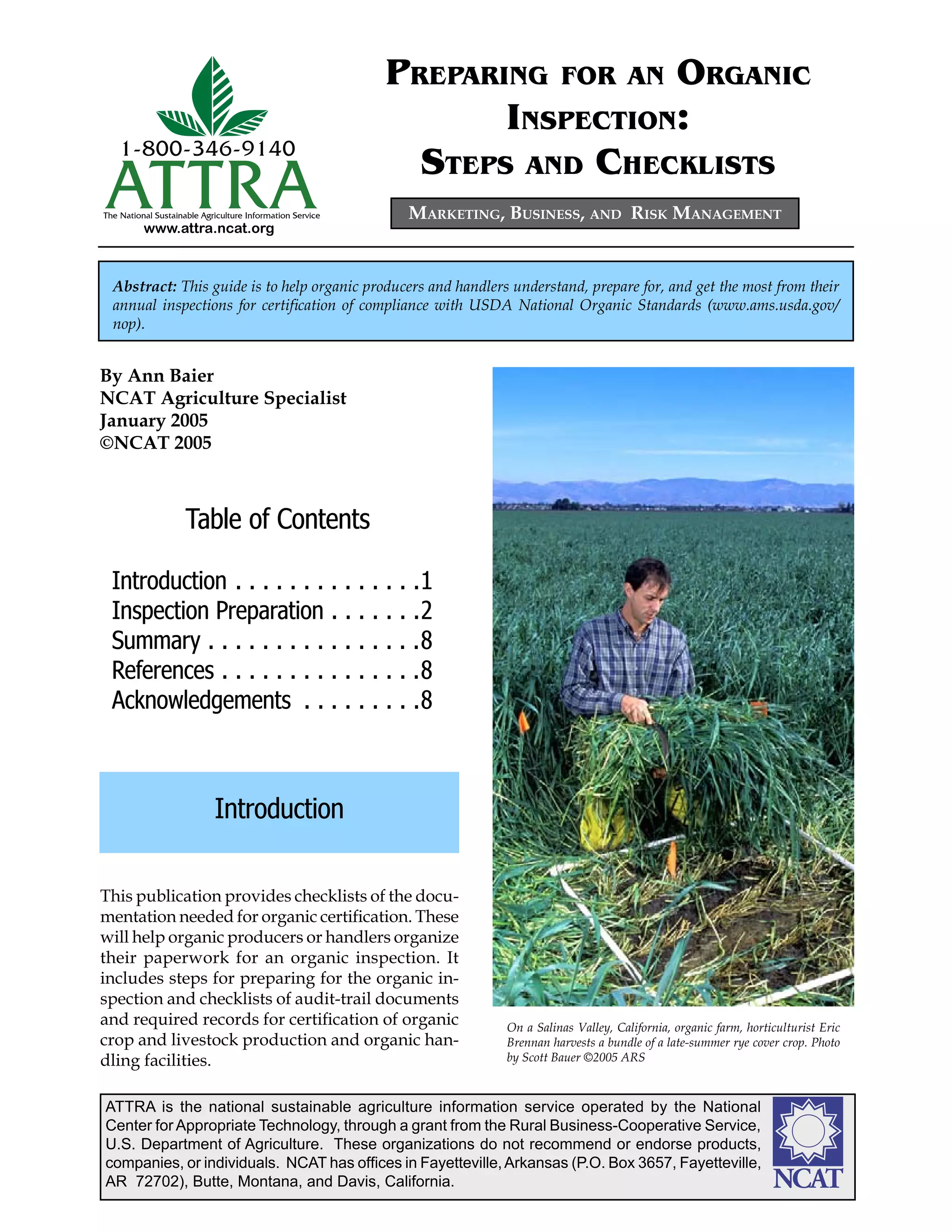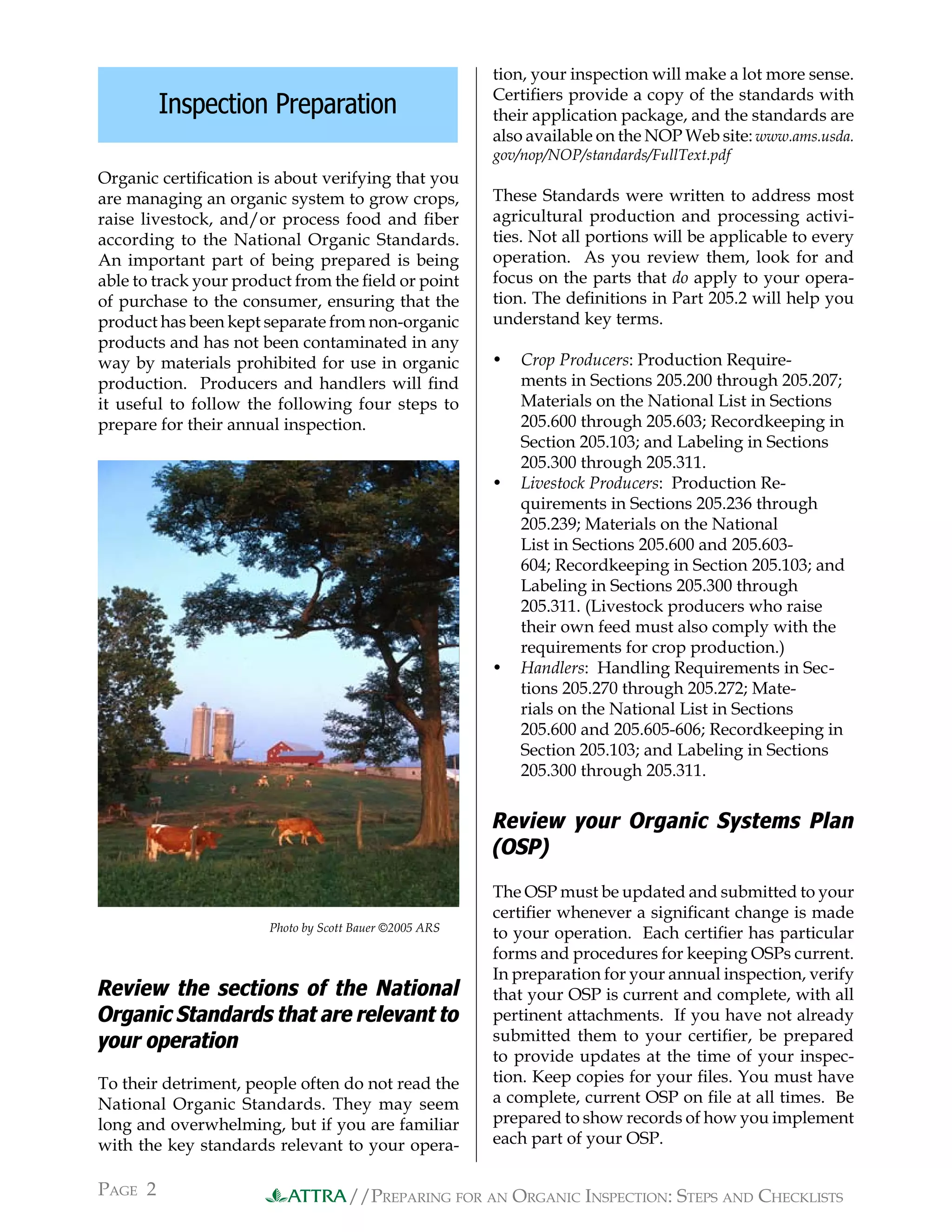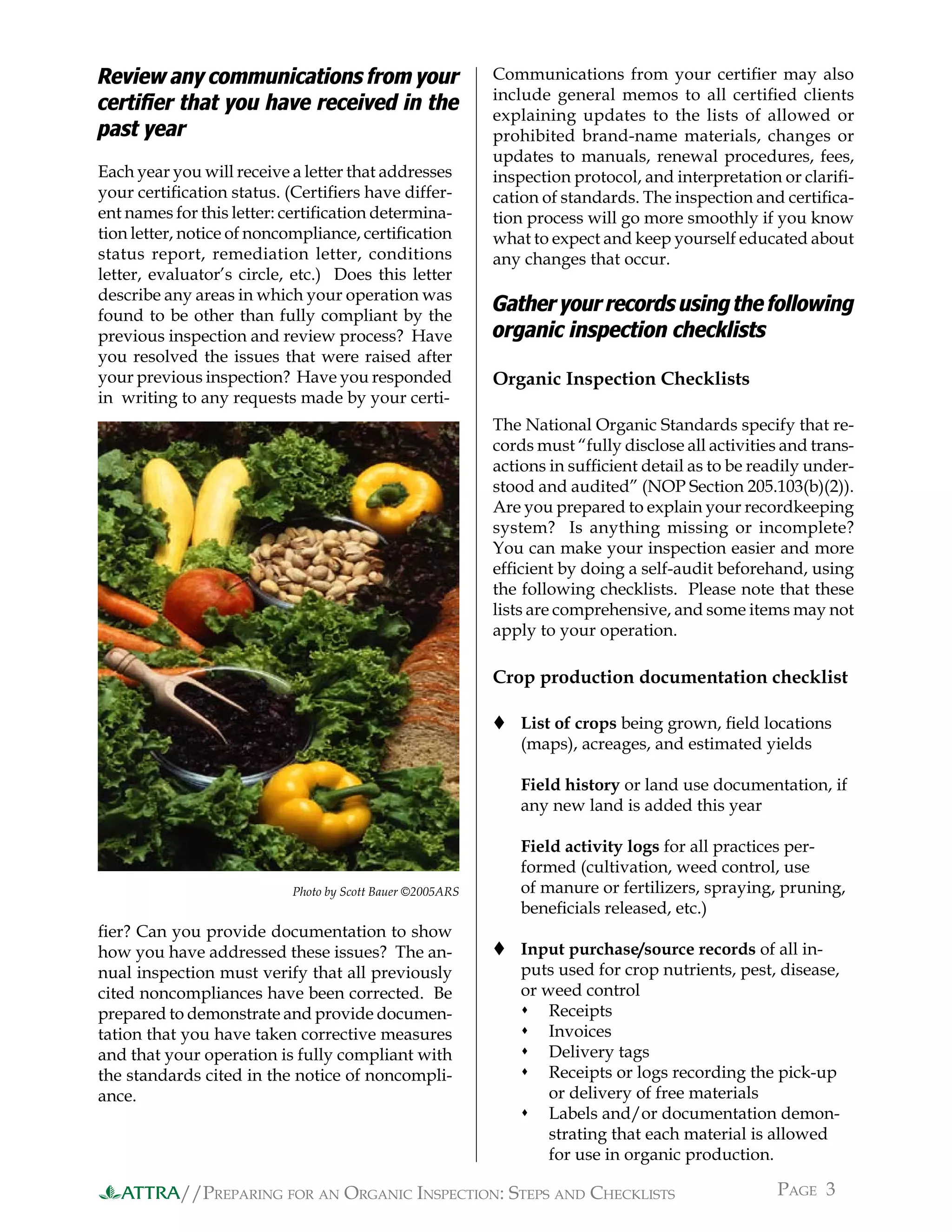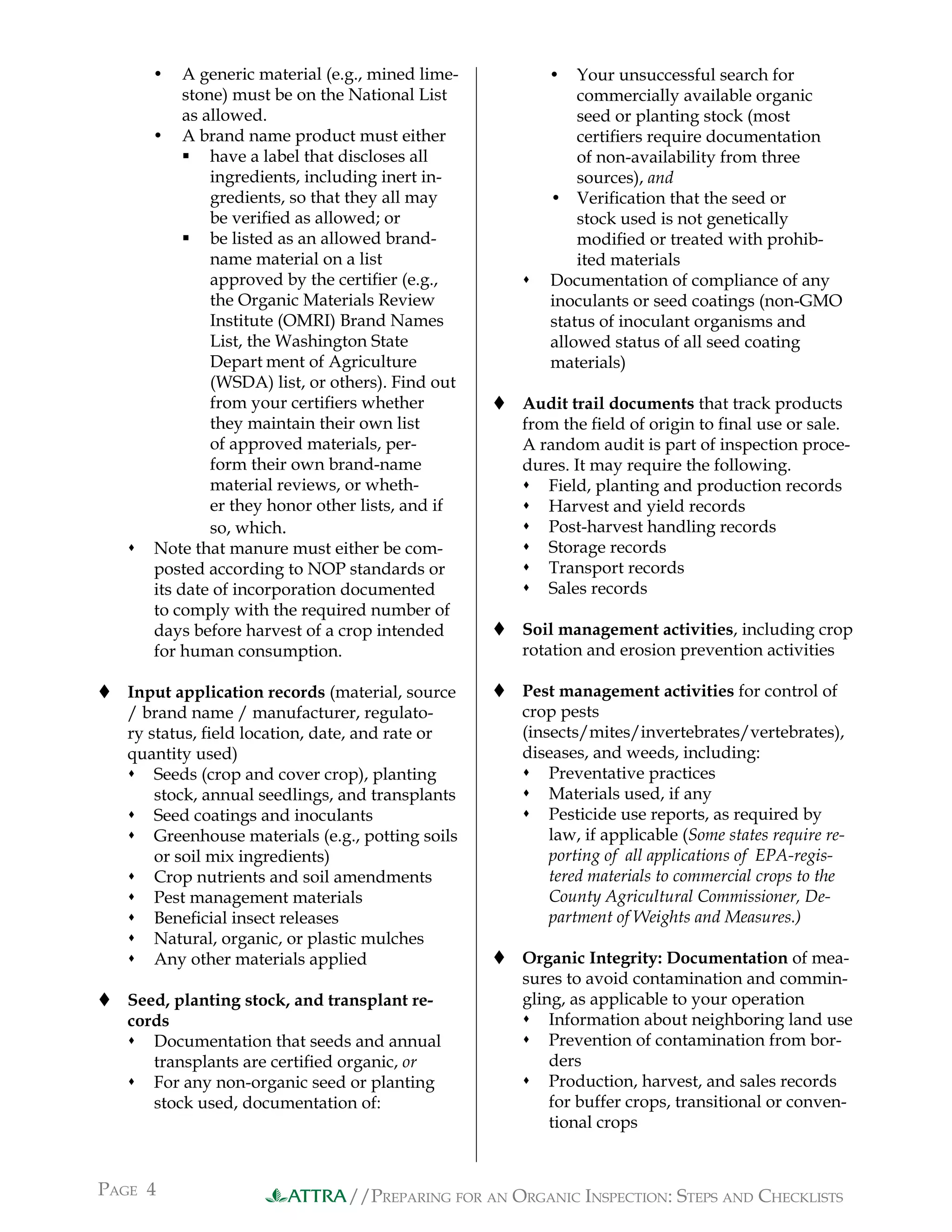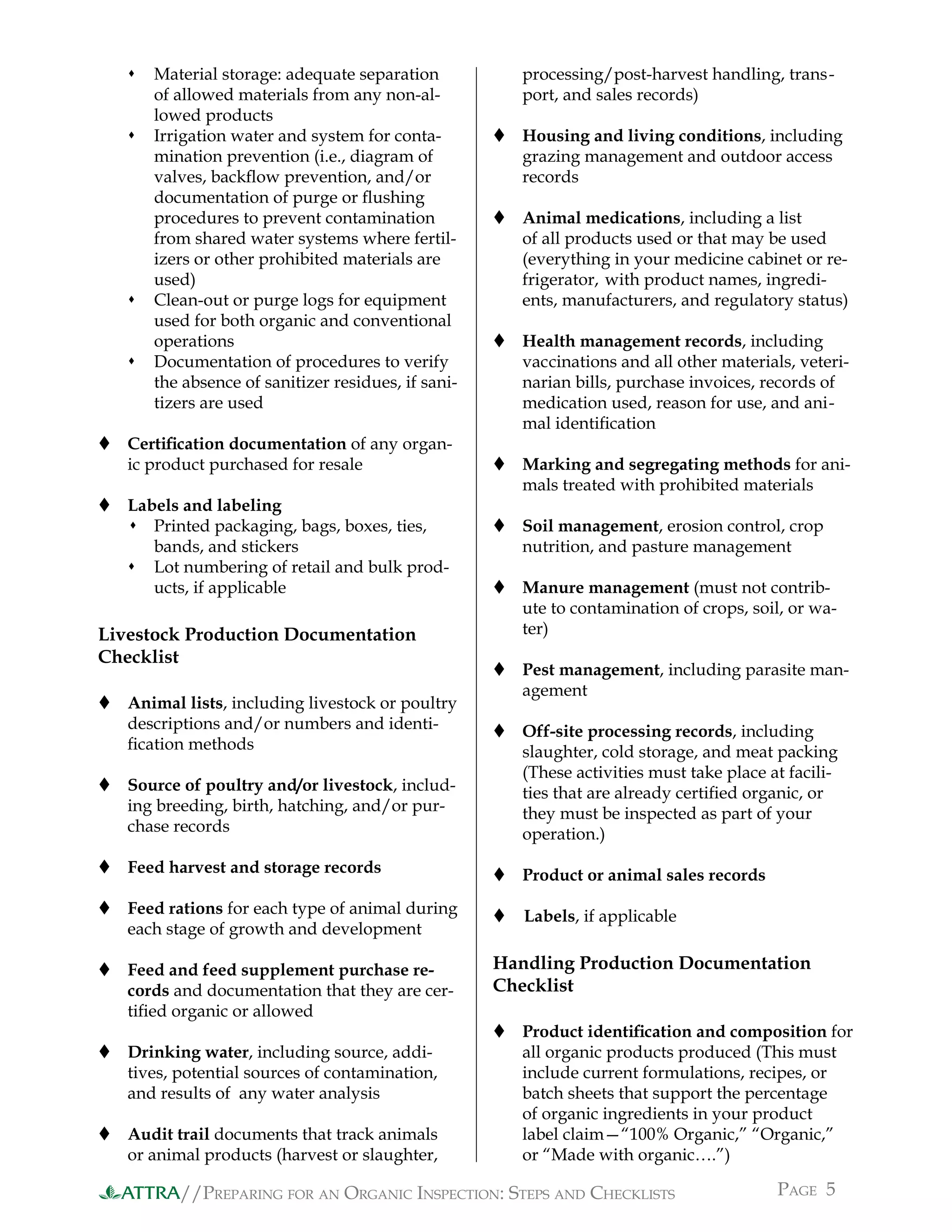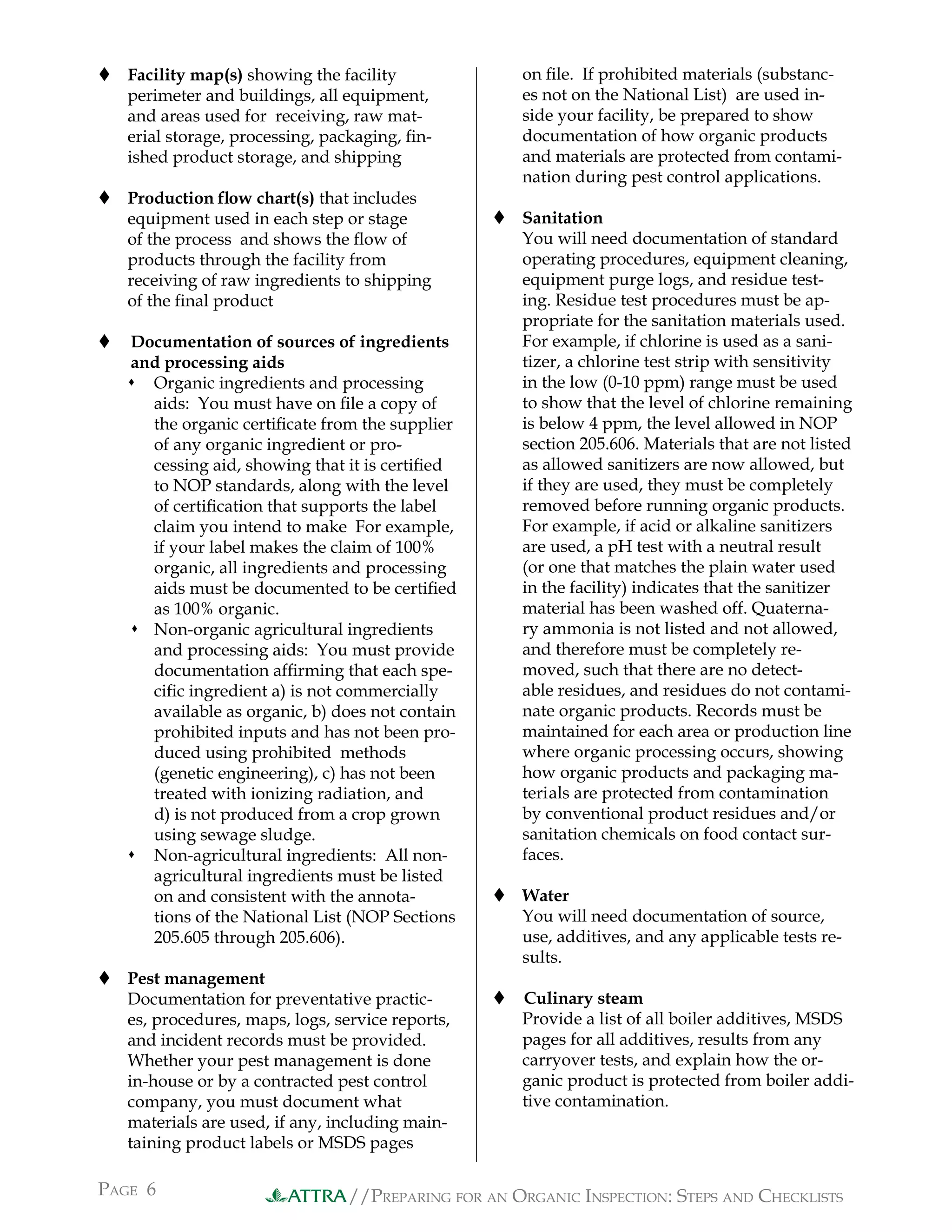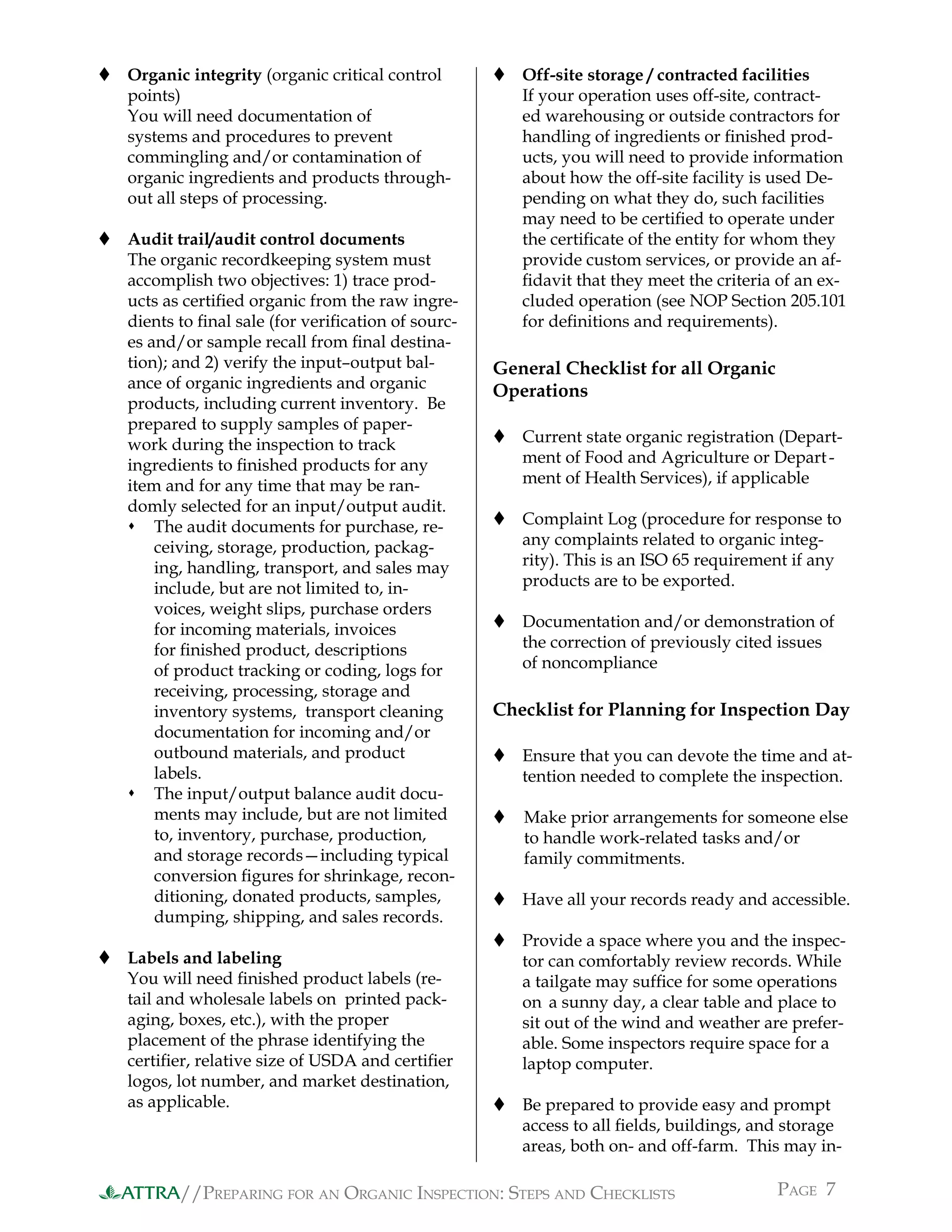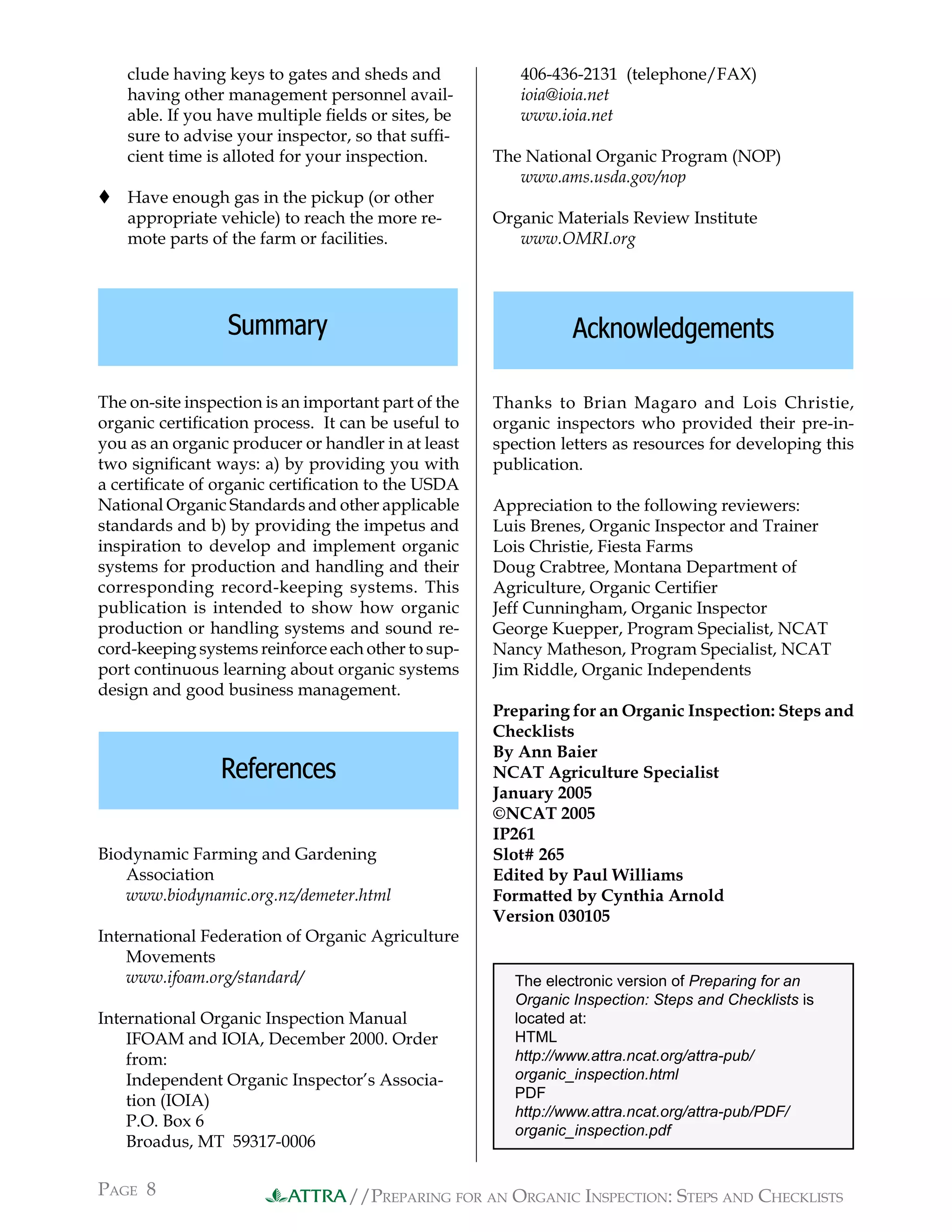This document provides checklists and guidance to help organic producers and handlers prepare for their annual organic certification inspection. It outlines four key steps for inspection preparation: reviewing relevant sections of the USDA organic standards; updating your organic system plan; reviewing any previous communications from your certifier; and gathering your records using the inspection checklists provided. These checklists cover documentation needed for crop and livestock production as well as handling facilities, including records of inputs, production practices, sales, and measures to prevent commingling and contamination. Following these steps and having complete documentation will help ensure a smooth certification inspection process.
